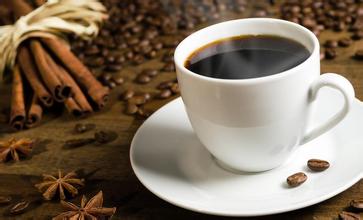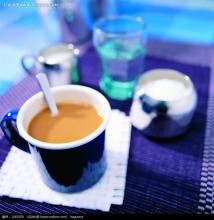Introduction to the Flavor and Taste production area of Coffee Manor in Costa Rica
HernandoTapasco's team, the lead botanist, set up a climate station on the estate to track weather data and help make harvest decisions. The data on the farm were collected continuously and analyzed once a week. After harvest, they will compare weather data, production data and cup test data and analyze the correlation. The harvesters of Rose Summer are strictly trained to collect only ripe cherry fruits and are paid by the day, unlike other manors by weight. In order to prevent workers from harvesting unqualified cherries in order to improve their performance, half of the harvesting workers have more than six years of experience. After the fruit is harvested, it will be sent to the central processing plant in Hope Manor, and each batch of rose will be marked and dealt with separately. First go through the drying stage three days ago in the sun field, and then move to the small tower to dry. Strict quality control is another key. There are 40, 000 to 45, 000 rose trees in CerroAzul Manor, of which only 5-7000 can produce rose beans with the CerroAzul brand.
The experiment and innovation of Hope Chateau on variety seems to be endless, constantly experimenting with different new varieties, in addition to the organic Kaddura, which used to make up the majority of the area of the Hope estate, from rose summer, organic rose summer, mocha, bourbon (including different red, yellow, Tekizik bourbon), pointed bourbon, Pakamara, San Bernardo and Pache, they really bring the chateau's serious attitude towards grape varieties to coffee. After the rosy summer, from the Pacamara, Bourbon and even the pointed Bourbon produced by the Hope Manor, they continued to create the surprise and admiration of the boutique coffee world. CafeGranjaLaEsperanza's estate is located in eight unique microclimate producing areas of the three mountains of Colombia, which gives their botanists an excellent opportunity to experiment with different microclimates and land flavors, different treatments, and different coffee varieties. It combines the rationality of scientists, the sense of smell of businessmen and the persistence of coffee quality. For example, they create different treatment steps and norms for different microclimates and varieties. From seedling cultivation to export, there are 95 data points to manage all the data. When Herrera returns home, the first estate that Herrera buys is Trujillo's LaEsperanza, which is very close to their grandfather's original farm and now serves as the regional headquarters. The manor itself is 100% organic, with a variety of coffee trees including Colombian species, Castillo, Caturra and more than 14000 organic roses. Next, Herrera bought four estates in Trujillo and Caicedonia, north of Trujillo. Together with the LaCardeida estate in Boquete, Panama, which was leased in 2005, it now has six estates with a total coffee planting area of 213ha. Hope Manor is different from other estates, with doctoral botanists, three professional cup surveyors, 100full-time employees and currently manages one of its estates. The estate is owned by the Herrera brothers. In fact, the grandfather of the Herrera brothers, who ran a coffee farm in the Trujillo district of Colombia, gradually declined, and the two brothers left Colombia. But they didn't give up their dream of running a coffee farm in their hometown.

Important Notice :
前街咖啡 FrontStreet Coffee has moved to new addredd:
FrontStreet Coffee Address: 315,Donghua East Road,GuangZhou
Tel:020 38364473
- Prev

Introduction to the main varieties of Coffee Manor in Nicaragua
Rene, the owner of the manor. Martin inherited his father Jose. Liu Ruoying, the main varieties of the manor are Kaddura and Pakamara. The Pacamara of the estate was the runner-up of COE in 2009, and Martin's father accepted the advice of a friend to plant Pacamara from El Salvador because of its productivity and cold resistance. [introduction to the country of origin] the planting conditions in Nicaragua are not inferior to those in Central American countries.
- Next

The flavor and taste of Sidamo Coffee Manor Ted Manor
From the bean shape, this bean is a typical Ethiopian, small grain, the size is not very uniform, and the color is the characteristic of typical sun treatment, so it is specially compared with Harald to have the most direct grasp of the coffee flavor) to ensure the quality of each batch. Before the harvest season, Trabocca invites selected smallholder organizations / producers to participate in the production of micro-batches of coffee (about 1500
Related
- Does Rose Summer choose Blue, Green or Red? Detailed explanation of Rose Summer Coffee plots and Classification in Panamanian Jade Manor
- What is the difference between the origin, producing area, processing plant, cooperative and manor of coffee beans?
- How fine does the espresso powder fit? how to grind the espresso?
- Sca coffee roasting degree color card coffee roasting degree 8 roasting color values what do you mean?
- The practice of lattes: how to make lattes at home
- Introduction to Indonesian Fine Coffee beans-- Java Coffee producing area of Indonesian Arabica Coffee
- How much will the flavor of light and medium roasted rose summer be expressed? What baking level is rose summer suitable for?
- Introduction to the characteristics of washing, sun-drying or wet-planing coffee commonly used in Mantenin, Indonesia
- Price characteristics of Arabica Coffee Bean Starbucks introduction to Manning Coffee Bean Taste producing area Variety Manor
- What is the authentic Yega flavor? What are the flavor characteristics of the really excellent Yejasuffi coffee beans?

